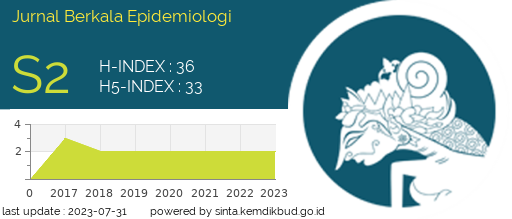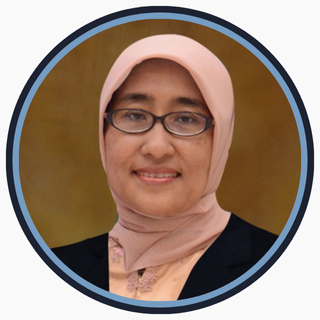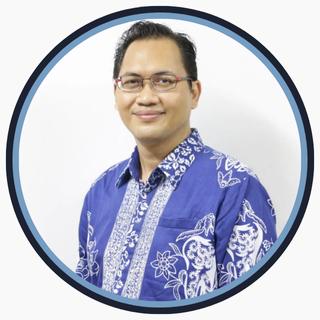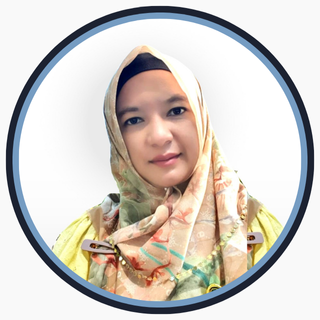SOCIAL MEDIA USE INTENSITY AND ADOLESCENT ANTISOCIAL BEHAVIOR: A CROSS-SECTIONAL STUDY IN SIDOARJO
Intensitas Penggunaan Media Sosial dan Perilaku Anti Sosial Remaja: Studi Cross Sectional di Kabupaten Sidoarjo
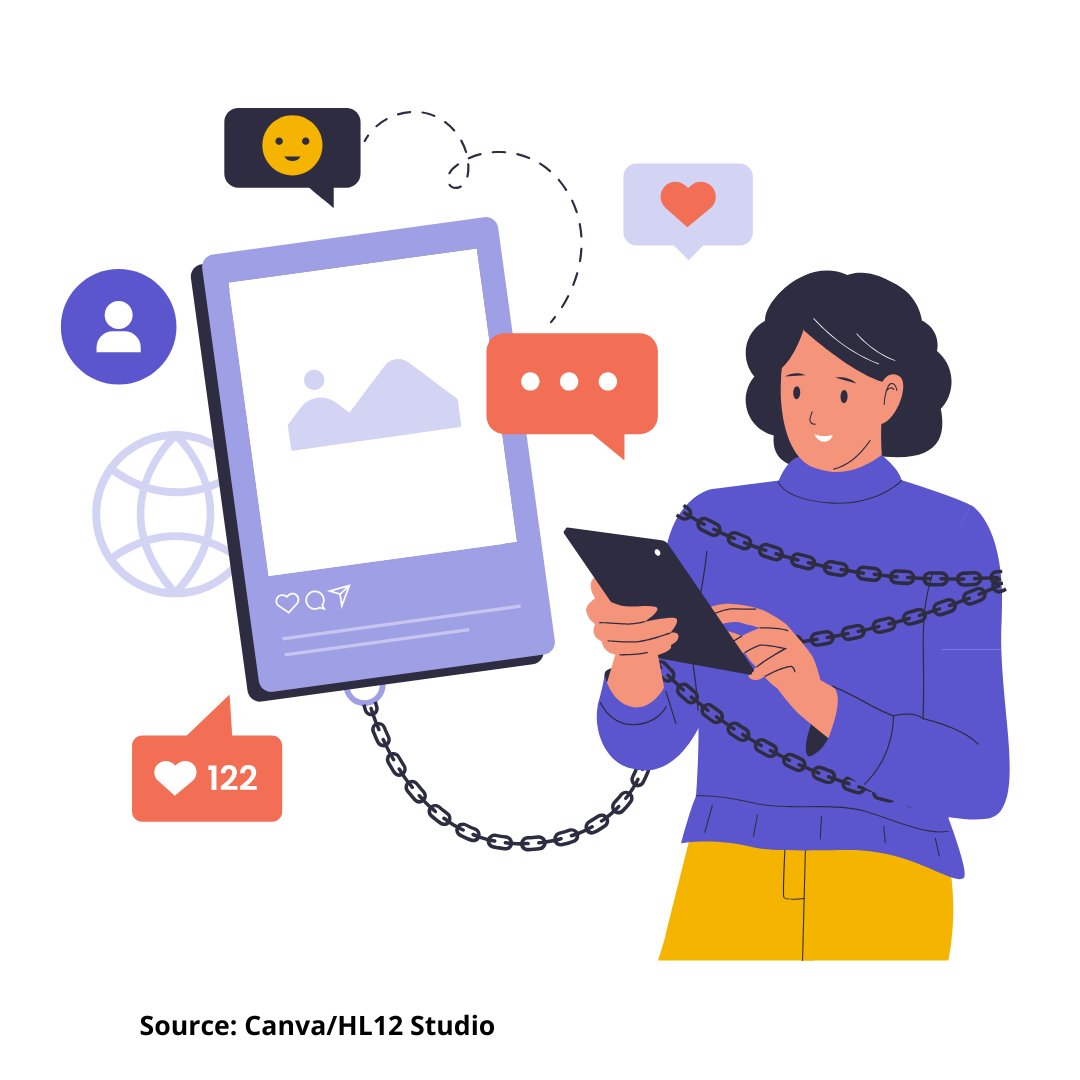
Downloads
Background: Social media usage is rapidly increasing and has become integral to everyone. The increased use of social media among adolescents has generated substantial concerns regarding its potential effects on mental health disorders. Purpose: This study investigates how the intensity of social media use influences antisocial behavior. Methods: The research was conducted in Sidoarjo Regency, held from March to April 2025, as an analytical observational method with a cross-sectional design. The population consisted of adolescents aged 17 to 25, with a total sample of 384 respondents selected through simple random sampling based on defined inclusion and exclusion criteria. Variables assessed included social media usage intensity, sleep disorder, self-confidence, anxiety regarding the future, and antisocial behavior. Data were collected using a self-reporting questionnaire and path analysis. Results: Findings indicated that 21.40% of respondents had low social media usage intensity, 7.00% experienced low sleep disorder, 24.20% had high self-confidence, and 18.20% did not experience anxiety about the future. Antisocial behavior was predominantly low among respondents (69.50%). The intensity of social media use was found to influence antisocial behavior directly and indirectly. Conclusion: Adolescents in Sidoarjo Regency displayed mental health disorder symptoms such as sleep disorder, reduced self-confidence, anxiety about the future, and antisocial tendencies. These findings highlight the importance of responsible social media use education, digital literacy programs, stress management initiatives, and increased involvement from families and educational institutions to create supportive environments promoting adolescent emotional stability.
Firdausi AA. The influence of social media on adolescent mental health. 2024.
Zubair U, Khan MK, Albashari M. Link between excessive social media use and psychiatric disorders. Ann Med Surg. 2023 Apr;85(4):875–8.
World Health Organization. Teens, screens and mental health: New WHO report indicates need for healthier online habits among adolescents. 2024.
Ministry of Health of the Republic of Indonesia. Understanding the importance of mental health in adolescents. Kementerian Kesehatan Republik Indonesia. 2022.
Ministry of Health of the Republic of Indonesia. Indonesian Health Survey (SKI) in figures. Jakarta; 2024.
Mustamu AC, Hasim NH, Khasanah F. Factors influence mental health in adolescents. Puinovakesmas. 2020;1(2):62–9.
Khalaf AM, Alubied AA, Khalaf AM, Rifaey AA, Khalaf AM, Alubied A, et al. The impact of social media on the mental health of adolescents and young adults: a systematic review. Cureus. 2023 Aug;15(8).
Sawyer SM, Azzopardi PS, Wickremarathne D, Patton GC. The age of adolescence. Lancet Child Adolesc Heal. 2018 Mar;2(3):223–8.
Rizki NJ. Erikson's theory of social and personality development (concepts, developmental stages, criticism & revision, and application). Epistemic J Ilm Pendidik. 2022;1(2):153–72.
Fisher KA, Hany M. Antisocial personality disorder. 2022 Aug;(Dsm 5).
National Implementation Team, National Working Group, Expert Team and NS for the I of SDG 2020–2024. National Secretary SDGs. 2022. SDGs.
Hartinah S, Sriati A, Kosasih CE. Description of the level of social media addiction symptoms in nursing students at Padjajaran University. J Keperawatan BSI. 2019;7(1):123–33.
Ayuningrum IY, Murti B. Application of path analysis and structural equation model. Sukoharjo: Bintang Fajar Offset; 2020.
Ningrum FS, Amna Z. Cyberbullying Victimizationdan Kesehatan Mental pada Remaja. J Psikol dan Kesehat Ment. 2020;5(1):35–48.
Gautam S, Jain A, Chaudhary J, Gautam M, Gaur M, Grover S. Concept of mental health and mental well-being, it’s determinants and coping strategies. Indian J Psychiatry. 2024 Jan;66(Suppl 2):S231–44.
Ginting JB, Karo-Karo S, Situmeang HAS, Ananda PM. Factors related to mental health problems in bachelor students of public health. J Berk Epidemiol. 2025;13(2):156–64.
Binjabr MA, Alalawi IS, Alzahrani RA, Albalawi OS, Hamzah RH, Ibrahim YS, et al. The worldwide prevalence of sleep problems among medical students by problem, country, and COVID-19 status: a systematic review, meta-analysis, and meta-regression of 109 studies involving 59427 participants. Curr Sleep Med Reports. 2023 Sep;9(3):1.
Zhu X, Zheng T, Ding L, Zhang X, Li Z, Jiang H. Exploring associations between social media addiction, social media fatigue, fear of missing out and sleep quality among university students: A cross-section study. PLoS One. 2023;18(10):e0292429.
Pirdehghan A, Khezmeh E, Panahi S. Social media use and sleep disturbance among adolescents: a cross-sectional study. Iran J Psychiatry. 2021 Apr;16(2):137.
Budiarti TN, Puspitasari AD, Rosyid AN, Indriani D, Melaniani S, Satryo FZO, et al. Insomnia Among covid-19 patients during isolation treatment in inpatient room of indonesian health care facilities. Media Kesehat Masy Indones. 2022;18(1):18–25.
Karna B, Sankari A, Tatikonda G. Sleep disorder. Treasure Island: StatPearls Publishing; 2023.
Gauld C, Lopez R, Geoffroy PA, Morin CM, Guichard K, Giroux É, et al. A systematic analysis of ICSD-3 diagnostic criteria and proposal for further structured iteration. Sleep Med Rev. 2021 Aug;58:101439.
Panggabean DAP. The relationship between self-confidence and anxiety in psychology students who will face their thesis at Medan Area University. Universitas Medan Area; 2021.
Berek JS, Radhika AG, Malik R. Berek and Novak’s Gynecology. New Delhi: Wolters Kluwer; 2022.
Robertson EL, Ray J V, Frick PJ, Vaughan EP, Thornton LC, Wall Myers TD, et al. The bidirectional effects of antisocial behavior, anxiety, and trauma exposure: Implications for our understanding of the development of callous-unemotional traits. J Psychopathol Clin Sci. 2023 May;132(4):445–60.
Isni K, Nurfatona WY, Qomariyah N. Social support in accessing adolescents mental health service. Indones J Public Heal. 2023;18(3):493–504.
- Every manuscript submitted to must observe the policy and terms set by the Jurnal Berkala Epidemiologi
- Publication rights to manuscript content published by the Jurnal Berkala Epidemiologi is owned by the journal with the consent and approval of the author(s) concerned. (download copyright agreement)
- Complete texts of electronically published manuscripts can be accessed free of charge if used for educational and research purposes according to copyright regulations.

JBE by Universitas Airlangga is licensed under a Creative Commons Attribution-ShareAlike 4.0 International License.

